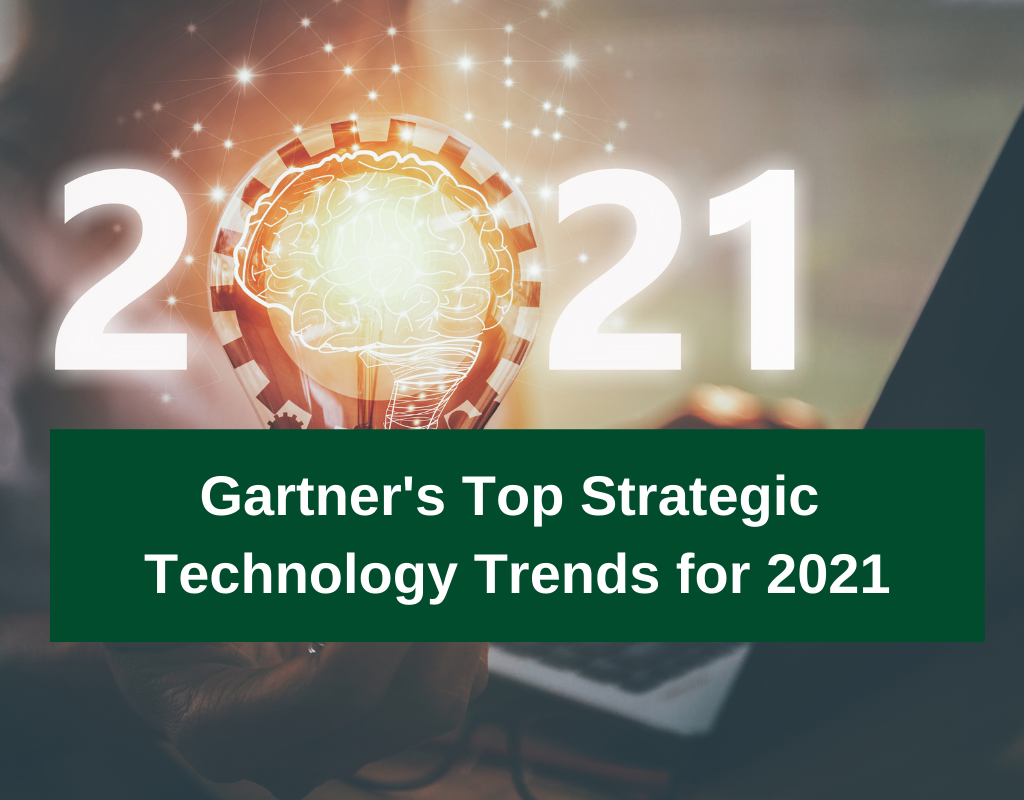Gartner has published what they consider will be the leading strategic technology trends for 2021, and it makes interesting reading. Grouping their predictions around three major themes – People Centricity, Location Independence, and Resilient Delivery – most of the identified trends are a direct reaction to the coronavirus pandemic and its impact on business and the economy.
What you will learn from this article:
- What are the three major themes and their leading strategic technology trends?
- What is the Internet of Behaviour, and how does it impact on our lives and jobs?
- What must organisations do to weather these disruptions?
People Centricity
The pandemic has changed the way many of us work and interact with our organisations. Despite that, people remain at the centre of business. However, to function effectively, the Gartner report emphasises that they need improved digitised processes. These include the internet of behaviours, total experience, and privacy-enhancing computation.
Internet of Behaviours
The internet of behaviours (IoB) follows on from the internet of things (IoT). In many ways, it is the most pervasive and controversial strategic technology trend identified by Gartner and has substantial ethical implications. Essentially it involves gaining ever more information on individuals from what the report calls their “digital dust”, in other words from customer data, social media, surveillance cameras, facial recognition, and other sources. The technology will integrate this data, gain insights on how individuals behave and use such insights to control their behaviour.
While the IoB can be as innocuous as monitoring the way you drive to fine-tune your insurance premium, it isn’t difficult to imagine more sinister applications. Though Gartner reassures us that “IoB must offer mutual benefit to both parties or risk being rejected by consumers”.
Total Experience
Total experience is an integration of various other experience collections, including multi-experience (MX), customer experience (CX), employee experience (EX) and user experience (UX). The aim is to create a better overall experience for all, particularly in response to challenges created by the pandemic.
Such an approach provides organisations with tools for creating joined-up services to optimise how customers interact with the organisation.
Privacy-enhancing computation
Privacy-enhancing computation includes several technologies, each of which are designed to protect individual privacy. These include:
- Creating a safe environment with confidential computing
- Decentralised processing and analytics
- Encrypting data and algorithms before processing or analytics (homomorphic encryption).
The aim is to allow organisations to share information while protecting private information and comply with the latest privacy laws.
With these innovations, it becomes obvious that innovation is not a question of technology only but deeply entangled with legal and ethical questions. As a consequence, managers in the tech sector should have broad competencies and a holistic view of their job.
Location Independence
The pandemic has shown that many of us can work remotely and that employees, customers, suppliers and the organisational infrastructure can interact without occupying the same physical space. However, we need new technologies to ensure this all works seamlessly. These technologies include the distributed cloud, anywhere operations, and a cybersecurity mesh.
Distributed Cloud
The distributed cloud made its first appearance in a Gartner report in 2020 and continues in the 2021 edition. Effectively it is the next generation of cloud computing and aims to reduce latency by locating data storage and cloud services closer to the user in a micro-cloud while running it all from a centralised location. Essentially it is a form of edge computing.
One benefit is cost savings by providing customers access to public cloud services while keeping their private data in a specific geographical location in compliance with privacy regulations.
Anywhere Operations
This might, by today’s standards, appear old hat. After all, we have become accustomed to remote working, remote customer support, and providing business services through a distributed infrastructure. But “anywhere operations” as perceived by Gartner takes this to the next level and offers “unique value-added digital experiences”. The five core areas for delivering this promise include:
- Collaboration and productivity
- Secure remote access
- Cloud and edge infrastructure
- Quantification of the digital experience
- Automation to support remote operations
Gartner predicts that by the end of 2023, 40% of organisations will be applying anywhere operations to deliver “optimised and blended virtual and physical customer and employee experiences”.
Cybersecurity mesh
Cybersecurity is a pervading and burgeoning challenge, but what exactly does Gartner mean by a cybersecurity mesh? They define it as “distributed architectural approach to flexible, reliable, and scalable cybersecurity control”. The pandemic has increased the trend for digital assets to be located externally to traditional physical and security parameters and the mesh provides an infrastructure whereby all those assets receive the same stringent level of security services wherever their location.
The distributed cybersecurity mesh must provide high security without hindering growth. It must be scalable, flexible and dependable.
The pandemic has rolled over the way we used to work. No question, the “new normal” will be different from the Pre Corona working habits. What it exactly will be, nobody knows. Therefore the only advice can be to create the conditions, regading performance of technical infrastructure, security but also legal aspects to allow the most flexible way of working under the new normal.
Resilient delivery
Gartner’s third theme is resilient delivery, which refers to maintaining delivery despite instability and volatility in the world, whether caused by a pandemic or an economic recession. The three vital strategic technologies to enable this are an intelligent composable business model, AI engineering, and hyper-automation.
Intelligent composable business
The pandemic has proven too disruptive for many businesses. Those that have failed to adapt have broken. To rebuild, businesses must build an architecture that provides improved access to information, provides new insights based on that information, and is “composable, modular, and can change and respond more quickly as decisions are made”.
In other words, such a model will provide better business outcomes that are “timely, relevant and contextual”. It is about being more adaptable, agile, and capable of responding rapidly to change. This calls for an overhaul of the decision-making process.
AI engineering
Gartner points out that we need to get better at AI engineering, specifically in terms of DataOps, ModelOps and DevOps. The same principals of DevOps that apply to high-speed code changes must also be applied to models and data if we are to mover project on from proof of concept to full-scale production.
Hyperautomation
If it is capable of being automated then, according to Gartner, it will be automated. Hyper-automation is, they say, key to digital operational excellence and operational resiliency. Hyperautomation combines multiple components of process automation, integrating tools and technologies for automating work. Such elements include robotic process automation (RPA) and (AI), process mining, advanced analytics, and other tools.
As the pandemic has disrupted our mode of work it has also shed a bright light on all the breaks in our “semi-digital” processes. From one day to the other, our manual bypasses haven’t been an option anymore. Therefore it is good news that help is at hand. With approaches such as AI and Hyperautomation, it is possible to create end-to-end digital processes and guarantee resilient delivery internally to employees as well as externally to clients, partners and suppliers.
How organisations can adapt to these technology trends
Over the pandemic, business has on the whole been extraordinarily capable of adapting to rapid change and uncertainty. It must continue to do so into the future, and the trends identified by Gartner should be viewed as opportunities to differentiate themselves from the competition.
Adaptability and flexibility are key. None of the trends identified in the report should be viewed as independent; they are all synergetic to each other. Taken together, they will change the business landscape through and beyond the pandemic. As Gartner points out, they are not reversible. The arrow points only forward.








